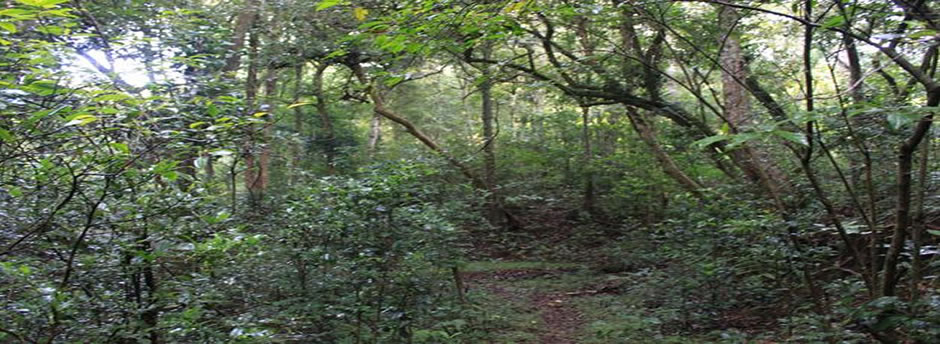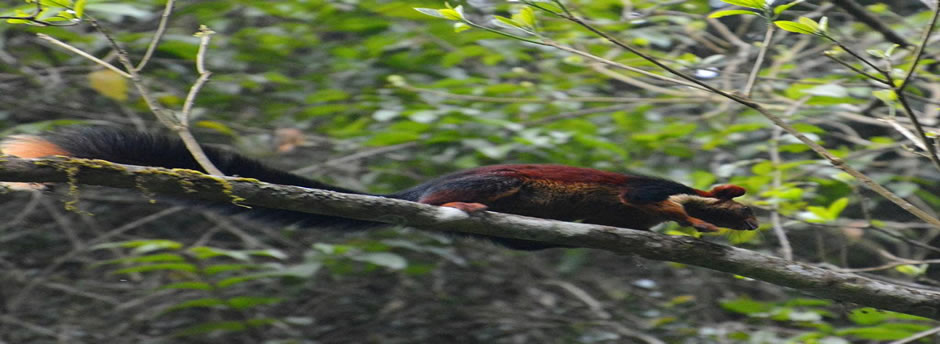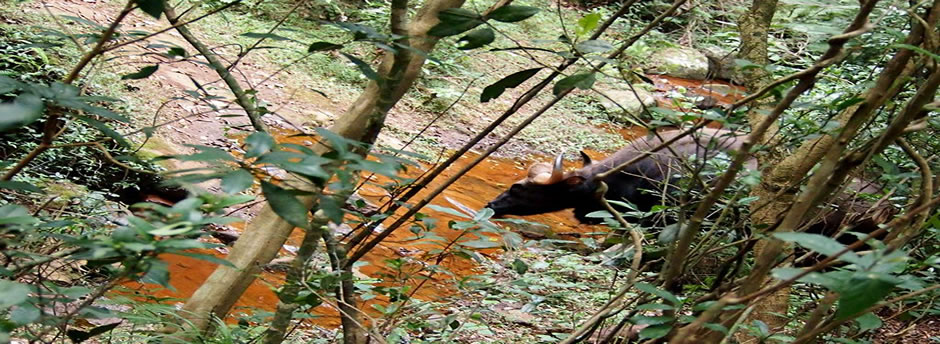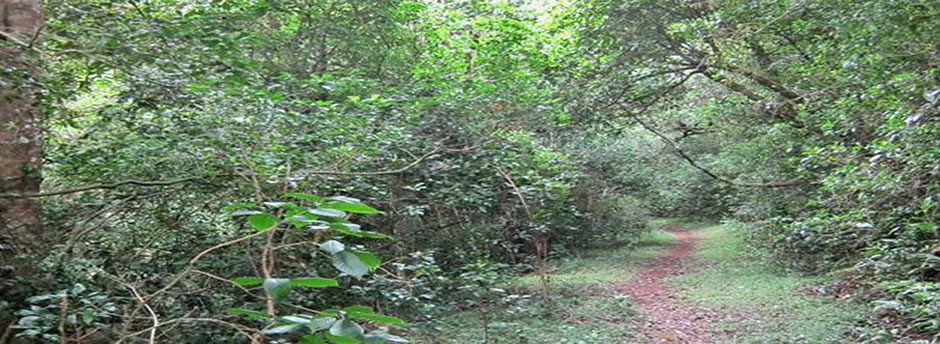Longwood Shola Timing & Entrance Fees
Forest 9:00 am to 5.30pm No fees 7 TipsTiming: Mon-Fri: 9.00 am to 6.00 pm, Sat-Sun: 9.00 am to 6.00 pm
Fees: Rs 100 per person
Camera Fees: No Fees
Things to do: Trekking
Places nearby: Kodanadu (15km), Nehru Park (2.2m), Pandian Park (4.3km), Catherine Falls (10km)
Entry fees last updated on 11/30/2016
Long wood shola is one of the tourist spots in Kotagiri. It's a dense forest that extends to an area of 116 hectares.one of the picturesque forest area with the trekking path. It is just 3km from Kotagiri. You need to trek 2.5 km into the beautiful shola forest.A long wood shola is a place for the habitat of the Indian Bisons and Indian Flying-fox. You can also find plenty of Guars and Malabar squirrels in this area.
Long wood shola is one of the tourist spots in Kotagiri. It's a dense forest that extends to an area of 116 hectares.one of the picturesque forest area with the trekking path. It is just 3km from Kotagiri. You need to trek 2.5 km into the beautiful shola forest.






7 Reviews and Tips
LONGWOOD SHOLA is the only major pocket of natural Shola forest left in the immediate vicinity of Kotagiri in the Nilgiris. Shola mountains, peculiar to the higher ranges of the Western Ghats, are evergreen tropical rain forests which have evolved for perhaps millions of years; their irreplaceable contribution to the environment is now recognized, and consequently the urgency to preserve them. With an area of 115 hectares (including several hills to the east of the main portion), Longwood Shola is a relatively small forest, yet it is of great importance to the whole Kotagiri region. Not only is it a major water source to nearby villages and hamlets, but it plays a vital role in Kotagiri's microclimate.attracting and regulating rainfall. It also has a beauty of its own, which inspired the English poet James Cousins to compose a long poem in honour of this forest ". the shades of Longwood shola, Where the feet weigh scarce tola poised on pathways thickly strown With the leaves of seasons gone, Stirring from deciduous death Nature's vitalising breath.. ." Shola forests harbour a very wide variety of flora the most conspicuous of which are of course trees. Many of them are endemic species, some specific to a particular altitude or even to a particular area. As a general rule, the higher the altitude, the smaller and the glossier the leaves of the trees, because the trees require less foliage area to capture lignt. But a Shola is much more than trees: shrubs,flowers and ferns of many kinds,mosses. orchids (the last three found both as epiphytes and as ground varieties).lianas. bamboo reeds.creepers, many typesof grass in the streams and swampy areas.and a large number of mushrooms and fungi- all vie for space and light. Each of theseplants, from the biggest tree to the smallest moss or fungus, plays an important role in the ecological cycle of the forest. Longwood Shola even today provides shelter to a varied fauna. in particular a rich bird life. A casual visitor can easily spot a few Nilgiri laughing thrushes, grey jungle fowl, goldenbacked woodpeckers, as well as babblers. flycatcherS and tits of various kinds; if he is lucky, a Nilgiri wood pigeon or an eagle owl may beckon him, perhaps a shikra or a crow pheasant. He may alsoencounter some of the bigger inhabitants: the playful Indian Giant squirrel, the shy barking deer, the boid bonnet macaque,and in recent years, the majestic gaur. Nocturnal animals include wild boars, porcupines, hares, wild cats, mouse deer,and the rare Nilgiri marten. The observant eye may catch a glimpse of some of the smaller yet important animals,such as the small (and rare) jungle squirrel,bats, frogs, toads, snakes (very rare), and of course insects in their thousands. The latter range from stunning butterflies, impressive scarabs and beetles to bees, bugs, centipedes, and down to nearly invisible thrips. Again, each of these animals plays a role in the forest life. Most birds, for instance, could not survive without both insects for food and trees for shelter. At the same time, along with squirrels and monkeys. they repay their debt to the forest by helping in the germination of the seeds which they eat and reject, while bees and buttertlies help in cross-pollination. The most visible contribution of Longwood Shola to the area is water. Longwood Shola has three main perennial streams (with several smaller perennial tributaries, and a few seasonal ones). Two of the main streams join in the central swamp: the third joins them in the pond below the old Nursery. Together they supply many cubic metres of water downstream every day, even during drought. The main villages directly benefited are Kerbetta, Kerbetta Hosatti, Aravenu and Jackanarai, and several surrounding hamlets, about sixteen of them in all. Some remaining water can be seen to flow farther down as an open stream, and villages as far as Kottacombai and below use that water as well. Water is however not the only benefit derived from Longwood Shola. Sholas (in fact all tropical rain forests) are known to attract the rain by sending a considerable amount of transpiration back into the air through their dense foliage; this transpiration acts as a catalyst for rain clouds. Longwood Shola's influence on Kotagiri's famous microclimate ( Second Switcherland) is therefore undeniable. Large-scale conversion of forests in the past has adversely affected rainfall in the Nilgiris, and the disappearance of Longwood Shola could only lead to worse climatic imbalance around Kotagiri. Sholas also contribute to the local climate by absorbing carbon dioxide, by breaking the force of rains and of the wind, and by lessening the effect of droughts. They act as an irreplaceable brake on natural calamities. Landslides, for example, used to be virtually unknown some decades ago. As is well known, erosion is in direct proportion to the disappearance of forests. Finally, Sholas hold a store of medicinal plants, many of which are still little known. Preservation of Longwood Shola Despite its importance, Longwood Shola has suffered much over the last thirty years. A number of villages and settlements, both big and small, are located all around it and have expanded considerably, subjecting it to intense population pressure, despite the chainlink fence erected in 1987. To help in its preservation, in May 1998 the Tamil Nadu Forest Department constituted an eight-member Longwood Shola Watchdog Committee consisting of concerned citizens of Kotagiri. In collaboration with the Forest Department. this Committee is keeping watch on the Shola's ground situation, conducts awareness camps and meetings in nearby villages to convey the importance of this forest, and brings schoolchildren into the forest. It will also study and suggest ways to provide the poorer among the villagers with alternative fuel. On 15 November 1998, an Eco-Awareness Centre was opened in the community hall built by the Forest Department (Longwood Shola's Kerbetta entrance) witha permanent photography exhibitionon Longwood Shola, audiovisual equipment, and educational material on Shola forests. The Longwood Shola Watchdog Committee is making use of this Centre to conduct awareness camps, as well as training workshops for both teachers and schoolchildren. If awareness continues to spread in this promising manner, and if the villagers' fuel needs can be taken care of, we may hope that the trend will be reversed and this beautiful Shola will yet recover its full glory. The story behind the Longwood Shola: In 1905, a British environmentalist, Baylene Brook built a bunglow at the heart of the shola and he stayed there for another 45 years. He was supposed to be the real conservator of the forest. In those days the British rulers encouraged the native Badaga people to remove forests and convert into tea gardens. When the people from the adjacent Kairbetta village were enthusiastically removing the forest, he had succusfully convinced the people and saved the Longwood. now a beautiful forest in the heart of the Kotagiri town. Afterwards the Baroda Maharaja and some other Bombay cinefield people stayed there in the legendary bunglow and finally it came into the possession of Mothers Research Institute, an allied institute of Sri Aurobindo Ashram of Pondicherry. Mr.Michael Danino, a French nationalist, the Director of the Institute, took yeo man effort to protect the forest from tree cutters and firewood mongers he Longwood Shola Watch Dog Committee was established with a handful of members like Mr.K.J.Raju, a teacher, Mr. Michael Danino, a researcher scholar on Indian Culture, Mr.Michael Ezkiel, a music teacher, Dr.Ramakrishnan, a physician Mr.Chandrasaker, a wild life enthusiast, Late Mr.Balamurugan, an educationist etc. The committee successfully protecting the forest for the past 25 years and still continuing. The activities and achievements of the committee as mentioned by Mr.K.J.Raju.are, () The The entrance part of the Longwood Shola. about 14 acres of Eucalyptus plantation was removed and converted into a shola forest, with native tree species. with the help of the Forest Department, thereby it was proved that a natural shola forest can be regenerated. Operation Exotics: The exotic tree species like Eucalyptus, accacia etc.and (i) invading weeds like Cestrum robusticum, a South American weed species were periodically removed from the shola with the help of students. Now the shola is literally free from exotics and there by a lot of native speciesemerged. (iv) (ii) The Longwood Shola Eco Interpretation Centre became an educational institution and thousands of students were trained as eco warriers, some to be mentioned like Mr.Kalidass of Osai, Coimbatore, Mr. Yoganathan, who planted three lakhs tree saplings at Coimbatore etc. (v) The intense efforts of the committee members resulted in protecting a 16 acres of forest land from enchrochment and now it is converted in to a Revenue Forest that nobody can touch. (vi) The members of the committee commited themselves to regular patrolling of the forest inch by inch, that ensures the protection of the shola. Now the shola is totally free from firewood pickers and habitual tree cutters. Some of the challenges in the protection of the Longwood Shola are, () The invading exotic species from the adjacent part of the shola is the real danger. In due course the beautiful shola tree species may be invaded and removed by the foreign tree species like 'Sambirani', acacia etc. It is the duty of the Tamil Nadu Forest Department to remove the exotics with native species. A little bit of 'political will is required in their part. The chemical efluent from a private flowrey culture unit adjacent to the Longwood shola is polluting the water originating' places, the heart of the shola. (i) All their efforts to check them is fell into a deaf ear. The Longwood Shola Watch Dog Committee is a success story of the 'PPP, the public and private participation in the protection of the forest. The TN Forest Dept. can encourage in other forest areas, the people's participation
Please tell me if the mountain train is running as on date
Longwood shola is the only natural shola forest situated in Kotagiri. The place is renowned for bird watchers more than 80 varieties of birds. You can also find the animals such as Squirrel, Indian Gaur, deer etc. There are picturesque trekking ways which go through this serene shola.
Longwood shola is en route to Kodanad Viewpoint. After you reach the entrance you can't just drive down to Longwood shola as you need to get permission from Forest office guards at the entrance. For each and every traveler they are not giving permission only for few of them they give. So before inflicting that place get the permission from the forest office from the Kotagiri city and then proceed further.
Long wood shola is a very picturesque trekking place. This forest plays an important role in the Kotagiri's climate and rainfall. The area is also good for bird watchers. If you are a nature lover then this is the must place to visit.
Long wood shola is a thick forest in Kotagiri. It is one of the unique tourist spots in Ooty.If you find difficult to reach the place you can take a guide along with you.A good place for nature lovers and trekkers. The trekking is very easy must visit place for all age group.
Longwood shola is just 3 km from Kotagiri. It is a very good place for trekking and has a very good scenic paths.You can spot the animals such as Barking deer , Bonnet macaque , Indian gaur , Indian giant squirrels , Nilgiri marten etc..,